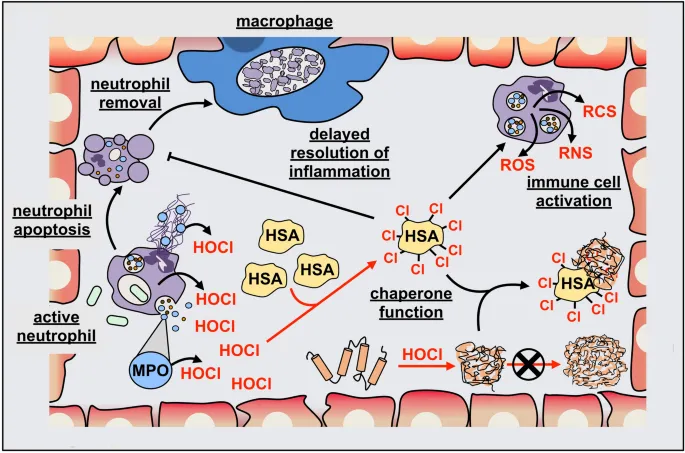Small Cup Mighty Power
Medical-Grade HOCl Solution: Your All-in-One Immune Support Agent for Oral, Skin, and More.
The Power of Hypochlorous Acid (HOCI):
- • Medical-Grade Sterilization & Disinfection
- • Gentle Yet Effective for Skin, Oral Care and More
- • Odor Elimination & Wound Healing Support
- • 100% Safe, Natural, and Eco-Friendly

What's Hypochlorous Acid(HOCl)?
Nature's Powerful Solution for Health
Hypochlorous acid (HOCl) is remarkably safe for the human body due to its natural presence and role in our immune system.
Your Body's Natural Defender
HOCl is your body's natural defender, produced by your immune system.
Safe, Powerful, and Effective
Nature's Antimicrobial Marvel: Tough on Germs, Gentle on You
For Oral & Skin Care
Revolutionary Impact on Healthcare, Skin Care and Disinfecting
For Wound Care
Revolutionary Impact on Healthcare, Skin Care and Disinfecting
Immune System
Immune System Uses it All the Time to Protect Health
Broad-spectrum protection
Eliminates 99.9% of bacteria, fungi, spores, and viruses within 60 seconds
Rapid action
Inactivates SARS-CoV-2 by 99.9% in just 30 seconds
Powerful yet gentle
100 times more effective than bleach, with a safety profile similar to water
Quality Assurance
Specialized Electrodes + Medical-grade Electrolytic Technology + Specialized Electrolyte
Our Specialties
It is our mission to manufacture high quality hypochlorous acid products and to this end we have done so.
99.99% effective, the hypochlorous acid supplied has highly effective sterilization properties.
The hypochlorous acid solutions for medical environments to meet the stringent requirements.
Free of harmful chemicals, mild and non-irritating, can be used in direct contact with the human body.
We have many patented technologies to provide efficient, environmentally friendly solutions.
From oral care to skin care, our product program has many extensions to protect your health.
Efficient and convenient online shopping experience, monthly delivery to your home.
The Best Solution For Oral and Skin Care
Before HOCl
High levels of oral biofilm bacteria and pathogens causing dental caries and periodontal diseases
After HOCl
Significant reduction in oral biofilm bacteria including pathogens like S. aureus
Results
No erosion or damage to tooth enamel, relief from skin conditions such as eczema, psoriasis, and acne
Nature's Powerful Wellness Helper
Choose the perfect plan that aligns with your wellness goals
S2Y Plus
Set
- Medical Grade HOCl Solution
- S2Y Smart HOCl Care Cup x1 set
- Protocol 1000/1050 Electrolyte 1 box
S2Y Advance
Pack
- Medical Grade HOCl Solution
- S2Y Smart HOCl Care Cup x1 set
- Protocol 1000/1050 Electrolyte Solution x3 boxes
- Spike Protein Detoxification Program
- Expert online support x1 month
- AI Consultation Account x1 month
Subscription
Best Value
- Medical Grade HOCl Solution
- 3 boxes/month (3 x 14 pcs)
- Protocol 1000/1050
- Concentration Adjustable
- Precision PH Adjustment
- Monthly Delivery
Frequently Asked Questions
Everything you need to know about the S2Y electrolyzed HOCl cup
What is the principle of the cup?
The principle of the electrolytic water cup is add tap water containing residual chlorine electrolyzing in diaphragm or non-diaphragm electrolyzer, and generate chlorine gas and H+ at the anode. H+ dissolves in water to make the water acidic, with a pH of 5.0~6.5. Chlorine gas reacts with water to form HOCl, which has a sterilizing and cleaning effect. After a period of time, electrolyzed water returns to tap water, which is safe and secure, and will not cause any burden to the earth's environment.
Does it really clean mouth bacteria?
Yes, S2Y electrolyzed water cup through the tested by Gmicro Testing shows can kill 99.99% of Candida albicans and Staphylococcus epidermidis and so on.
What is the role of adding mouthwash stock solution?
Because the water in each country is different, the addition of mouthwash is to adjust the PH value and electrical conductivity of the water, which can accurately control the PH value at 5.5-6.5, can produce more effective chlorine, and the disinfection effect is more significant, which will greatly improve the population with oral problems.
What are its advantages compared with ordinary mouthwash?
It is healthier and safer, and freshly prepared mouthwash has a higher germicidal rate. And it is colorless, odorless, alcohol-free, and chemical residue-free, suitable for children, the elderly and pregnant women.
What water is it suitable for?
In the case of no mouthwash stock solution electrolysis, we recommend that the PH value be between 5-9 and the conductivity be 25
Is it easy to make?
Yes, it is very easy to make, you only need to add tap water to the cup, (you can optionally add the original electrolytic solution), and after 1 minutes of electrolysis, a cup of mouthwash that can be disinfected and sterilized can be produced.
Is it safe? Does it pollute the environment?
It is very safe, and the mouthwash should be used within 30 minutes after electrolysis, because it will return to ordinary tap water after 30 minutes, which is non-polluting to the environment.
Will the electrolyte cell be corroded?
The titanium substrate and precious metal ruthenium iridium coating used in our electrodes are expensive, high electrolytic efficiency, longer service life of the electrolytic sheet, and safer, without the precipitation of other harmful substances.
Nature's Powerful Wellness Helper
Starting from $79 with Medical Grade HOCl Solution
Each box of electrolyte contains 14 tablet(15ml/pcs), can produce 4L of high-purity hypochlorous acid, as low as 0.1$/Ounce





